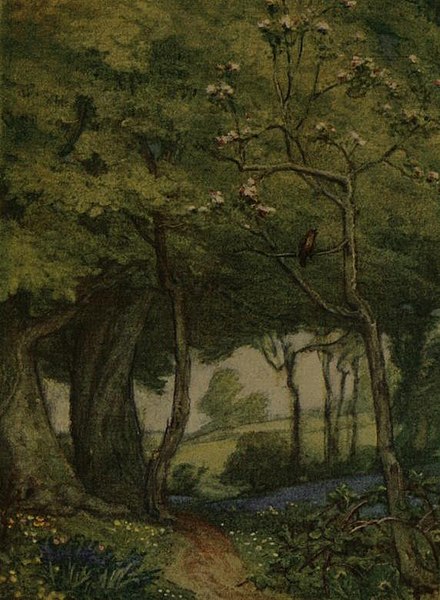"Ode to a Nightingale" is a poem by John Keats written either in the garden of the Spaniards Inn, Hampstead, London or, according to Keats' friend Charles Armitage Brown, under a plum tree in the garden of Keats' house at Wentworth Place, also in Hampstead. According to Brown, a nightingale had built its nest near the house that he shared with Keats in the spring of 1819. Inspired by the bird's song, Keats composed the poem in one day. It soon became one of his 1819 odes and was first published in Annals of the Fine Arts the following July. The poem is one of the most frequently anthologized in the English language.
W. J. Neatby's 1899 illustration for "Ode to a Nightingale"
Joseph Severn's depiction of Keats listening to the nightingale (c. 1845)
Holograph of Keats's Ode to a Nightingale written in May 1819
John Keats was an English poet of the second generation of Romantic poets, along with Lord Byron and Percy Bysshe Shelley. His poems had been in publication for less than four years when he died of tuberculosis at the age of 25. They were indifferently received in his lifetime, but his fame grew rapidly after his death. By the end of the century, he was placed in the canon of English literature, strongly influencing many writers of the Pre-Raphaelite Brotherhood; the Encyclopædia Britannica of 1888 called one ode "one of the final masterpieces".
Posthumous portrait by William Hilton, c. 1822
Life mask of Keats by Benjamin Haydon, 1816
Wentworth Place, now the Keats House museum (left), Ten Keats Grove (right), Hampstead Heath, London
Ambrotype of Fanny Brawne taken circa 1850 (photograph on glass)







